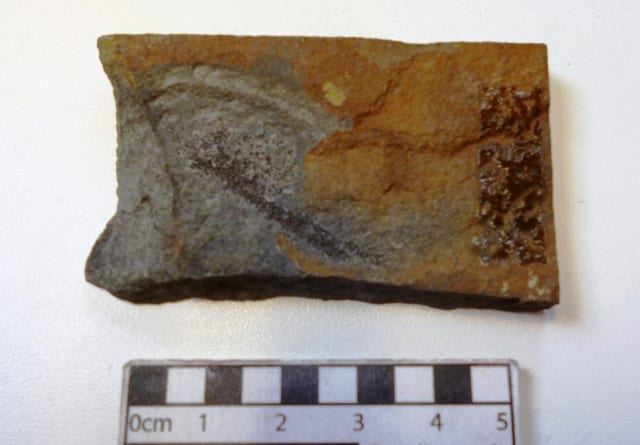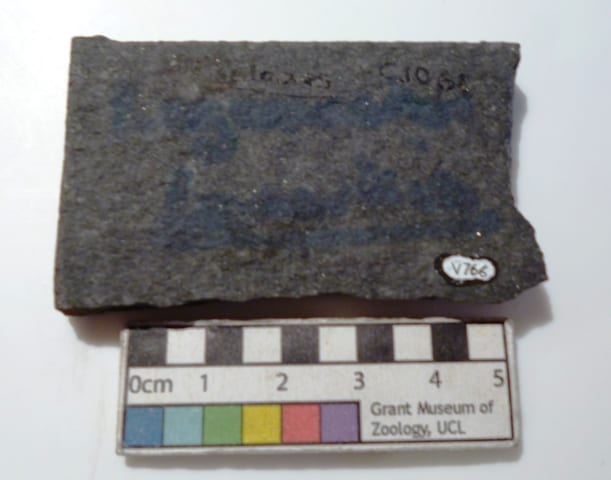Underwhelming Fossil Fish of The Month: March
By Mark Carnall, on 26 March 2013
March is nearly gone but there’s still time to squeeze in an Underwhelming Fossil Fish of The Month (UFFotM). Since last time I’ve been receiving some emails:
My Dear Beloved in Christ, Greetings to you and your family. I am Mrs. Lerien Namani” A widow to late ” Mr Martins Namani of Ivory Coast” I am 58 years old, my late Husband was a Director with the Construction Company here before his Sudden Death in this Country’s present political Crisis 2010, but before his death, he Deposited the Sum of¨$4.Million US dollars with one of the Bank here in Ivory Coast with my name and i am suffering from pancreatic cancer, My condition is really bad and it is quite obvious that I won’t live more than two months according to my doctors….[This carries on for quite a while]
I’ve also received an email about this month’s installment of UFFotM:
To Whom It May Concern
I HAVE BEEN REFRESHING YOUR WEBSITE SINCE 00:01 ON THE FIRST OF MARCH. WHERE IS THE NEXT FOSSIL FISH? [My Caps for emphasis]
Joe Bloggs
Well it’s here now Joe! It’s not easy digging out underwhelming fossil fish you know. The collection is full of perfectly preserved internationally renowned, indeed celebrity, fossil fish that have been instrumental in changing the world we live in today. It’s getting harder to find a rough amongst all the diamonds. But I’ve done it. I’ve managed to find yet another fossil fish that’s bound to put a dampener on your day. Dare you go beyond the jump to find out more?
SPOILERS I hope you packed your inhaler because this month’s installment contains a world first exclusive for this series: the reverse side of a specimen.
This month’s fossil fish is this beautiful specimen of Loganellia scotica. Eye napkins ready? Feast your eyes on this:
Yes, using the powers of science, somebody has managed to identify that smear of dots to species level. If the label is to be believed these are dermal scales belonging to a species of Thelodont fish, Logonellia scotica. Thelodonts are a weird and wonderful group of extinct jawless fish that sadly went extinct in the Late Devonian in one of the big five mass extinction events. There is some debate as to how cogent the group is and whether the defining feature of this group, thelodont (meaning “nipple teeth”) scales, had evolved a number of different times in related groups. Quite how this specimens has been identified to species level is remarkable. I’ve popped the specimen under a microscope and even under twenty times magnification the dots still resemble dots and nothing like these elaborate scales that typify the group. As with January’s fossil fish I suspect that as this specimen has been identified on the principle that it is probably from a very common species at that site it was collected from. This specimen comes from Logan Water in Lesmahagow, Scotland, a site that is now protected due to irresponsible collecting. Better preserved specimens of this Silurian species from this site give us a better idea of what the whole animal would have looked like but you can get a sense of the speculative reconstruction of these animals from these search results.
I promised you a shot of the verso, I hope you’ve had enough time to steel yourself for it.
For those of you interested in how museums work this specimen is a prime, almost text book, example of how not to label a specimen. First of all the original identification, Thelodus, and number was written directly onto the surface of the specimen in permanent ink, so this specimen forever carries its old number and outdated classification. Somebody has then seen to have a go at a re-identification and written the new name across the back in large smeary blue ink which has been absorbed by the matrix making it almost impossible to read. Palaeobiologists of today look and learn. Look and learn.
Preservation For this fossil it’s a tough one to call. On the one hand we don’t have a great deal of the original animal preserved. It isn’t too hard to imagine that these scales fell off of a fish just after death and by chance ended up getting preserved. On the other hand it’s a pretty remarkable that these 400 million year old fish scales got preserved at all.
Research I’ll be honest. This particular specimen is next to useless for research. However, this species and other thelodont fish are of growing interest to the research community. Unlike virtually every UFFotM so far, there are a number of recent references mentioning Loganellia scotica. Fossils like this are useful in two very different contexts. The first of these is that thelodont fish scales may be key evidence in understanding how teeth first evolved in vertebrates. It has long been thought that teeth originated from scales but there are two conflicting hypotheses; the helpfully titled ‘outside-in’ and the ‘inside-out’ hypotheses. Did scales like this on the heads, lips and cheeks of some fish end up as teeth through a process of evolution or did teeth evolve from other kinds of denticles inside the mouth? Another question of esoteric interest is whether teeth evolved before jaws.
The other area where these fossils are useful for research is in Biostratigraphy. Fossils like the ones here are found abundantly in sequences in the rock record and their appearance and disappearance from a rock sequence give us important clues about the environment of the time. Additionally, by mapping sequences of fossils regionally, nationally and internationally we can work out the relative ages of chunks of the rock record and how they relate to sequences halfway across the globe. Most usefully this information can be used to point us to economically important or valuable resources (oil, coal, natural gas, valuable mineral deposits). Of more esoteric interest this information can help us model how the Earth and life have changed over time. It’s from fossils like this that we can piece together the jigsaw of rock sediments and age the rocks we find and I can flippantly and fairly confidently estimate that this humble fossil is 423-427 million years old from the place at which it was found. That’s pretty cool. Fossils of Loganellia are used in biostratigraphy in a number of countries with Silurian deposits.
In Society This specimen of Loganellia may be rather uninspiring to look at, barely more than a stain on the surface of a rock. They certainly won’t be appearing in a Harlem Shake video anytime soon, however, as fossils that may hold clues to how we ended up with teeth and as fossils that help us piece together the history of the Earth from the rock record they’re the fossils that are worked hard behind the scenes.
Loganellia scotica
Preservation 5
Research 8
In Society 0
Underwhelmingness 10
One Response to “Underwhelming Fossil Fish of The Month: March”
- 1
 Close
Close




ZZZzzz…huh – what?!
Oh. Yeah. Fossil fish thingy. I could hardly contain my indifference!
(Until I read up about thelodonts which actually are distinctly more whelming than the av-er-age bear.)
Bravo! Now let me get back to sleep. I’ve still got 25 winks to go. ZZZzzz…